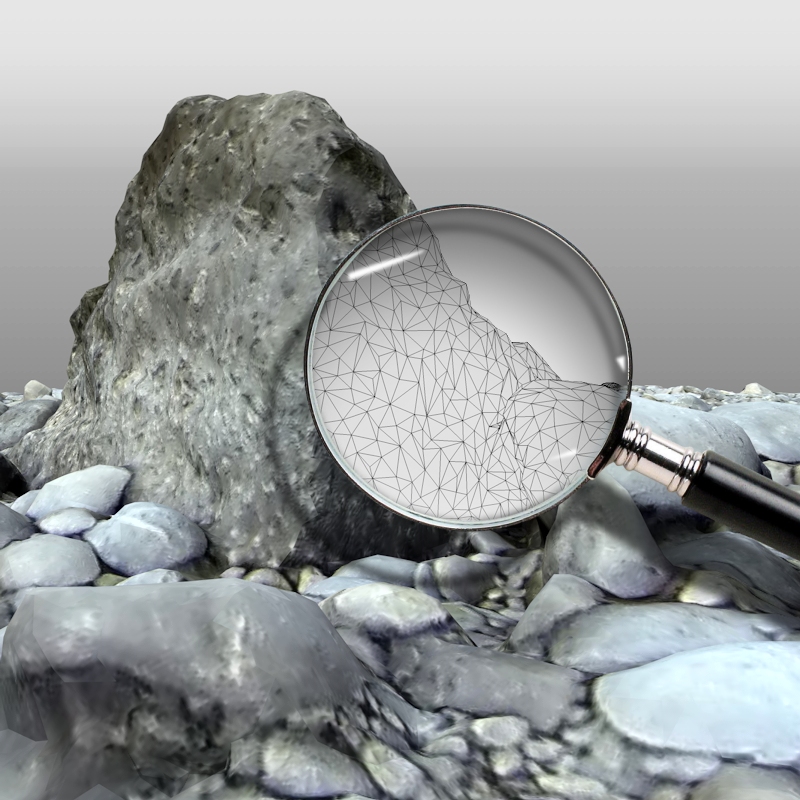
There is a huge disadvantage with photos: they are static. Personally, I always felt disturbed by the lack of depth and vividness. I am having a hard time to become part of a scenery if there is no depth, no motion, no volume. That’s probably why I always preferred videos instead of photos. That’s why I stood back from taking stills with my drone. Photos are boring. That’s what I thought – until I stumbled over Photogrammety. You don’t know what this is? Just watch the following video.
Video
What’s Photogrammetry?
Photogrammetry is hip. Currently, it’s the Holy Grail for drone flyers. Using this technique allows one to shoot a series of photos and compute a fully fledged, detailed 3d model from the filmed object(s) or area. The results are awesome.
Photogrammetry is the science of making measurements from photographs, especially for recovering the exact positions of surface points. Those points are then converted to a 3d mesh that can be used with any common 3d software like Cinema 4D.
Photogrammetry is used in archaeology (to achieve exact and detailed 3d models of archeological excavations), but also in architectural engineering or even the movie industry. It’s a great way to bring the real word into the computer and create a detailed 3d replication of single objects, persons or even entire landscapes.
In the movie industry, Photogrammetry is used to create digital copies of stages, buildings or even actors (to be used as digital stunt doubles then). What’s really fascinating with Photogrammetry is that small and tiny objects can be scanned as well as entire areas or even mountains. When used with smaller objects, those sculptures are usually placed on a turn table. Then you take a series of pictures from different view angles (the individual photos should all overlap each other). These photos are then fed into a photogrammetric software like Photoscan, which computes a 3d mesh of them.
Otherwise, also entire landscapes, buildings or sites can be scanned by flying a camera equipped drone over the specified area. The results look impressively realistic and detailed. Even the 3d mesh’s texture is automatically generated from the photos as well.
For 3d artists or drone flyers, Photogrammetry is a fascinating and time saving way to bring real-life objects into the computer. It’s incredibly easy to create stunningly realistic looking landscapes or exact replicas of objects, persons or buildings using this way.
In my own experience Photoscan from Agisoft offers not only the best results, but also the most convenience workflow to do so. Using Photoscan is very simple: you just load a bunch of photos into and let it automatically compute a point cloud from them. This point cloud already looks very similar to the filmed object and is used to generate a 3d mesh then, which can be exported and used with any common 3d software like Cinema 4D, Blender or whatever.
There are many nice tutorials around on YouTube that explain how to use Photoscan in both cases, to scan small objects (using a turn table) or entire buildings or landscapes.
Cinema4D
I am working with Cinema4D for more than fifteen years now (semi professional), but I still find myself discovering new stuff almost every day. It's absolutely amazing how much functionality Maxon packed into this mighty tool while keeping a clean and intuitive user interface. For me, Cinema4D is the perfect allrounder and I use it for all kind of graphics and animations.My Drone Shots
Most of my aerial shots and videos are done from first-person view using Fatshark goggles and the DJI Phantom 2 V2 with the Zenmuse H3-3D gimbal. I am not a fan of the latest "once click" drones with all the built-in smartphone stuff. Digital video submission does not provide the same, smooth experience than analog 5.8GHz submission and suffers from a low framerate and a high latency - which is absolutely deadly for a pleasant FPV experience.
You think this article raised lots of questions? Or you're interested into this topic and would like to know more about? Want to express your personal oppinion? Then feel free to drop a comment here.





 Author: Mike vom Mars
Author: Mike vom Mars SHIRTS & HOODIES
SHIRTS & HOODIES 








































